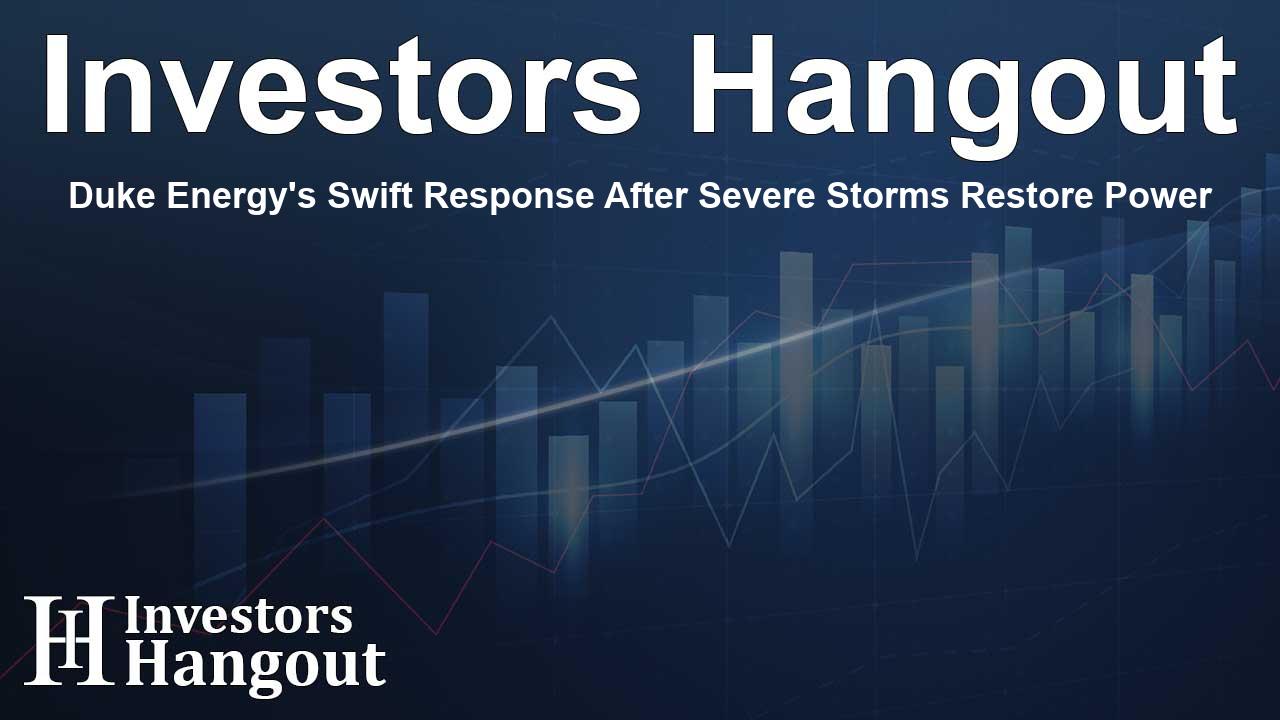Duke Energy's Swift Response After Severe Storms Restore Power

Duke Energy Restores Power After Severe Storms
Duke Energy has recently made headlines for restoring power to over 73,000 customers affected by severe storms. The storms caused extensive outages across numerous sites, impacting more than 100,000 customers in the areas that Duke Energy services. The company's crews mobilized swiftly to address the ongoing challenges, focusing on restoring power to those who remained without electricity.
Operational Response and Restoration Efforts
In response to the devastating conditions, Duke Energy's skilled technicians, tree trimmers, assessors, and support personnel set to work. Wind gusts were reported as high as 70 miles per hour, leading to significant damage from downed trees, power lines, and poles. The company quickly organized its operations, bringing in over 500 additional crew members to assist in the hardest-hit areas.
Areas Affected by Storm Damage
Significant impact was observed in several counties, including Bartholomew, Hamilton, Monroe, Union, and Vigo. These areas experienced extensive outages, and Duke Energy is committed to restoring service as quickly as possible. They are assessing damage and deploying resources to ensure that the restoration process is efficient and effective.
Estimating Restoration Times
Although substantial progress has been made, approximately 31,000 customers were still without power after the initial storm damage. Duke Energy is sharing estimated restoration times for specific areas with its customers. These updates are crucial for people relying on timely information about when they can expect power restoration.
Commitment to Customer Service
Clint Carnahan, the general manager of emergency preparedness at Duke Energy, expressed gratitude to the customers for their patience during the recovery period. "We're bringing in hundreds of additional resources to supplement our local workforce and help with power restoration in the hardest hit areas," he stated. The commitment to restoring power quickly while maintaining safety standards is a testament to Duke Energy's dedication to its customers.
Power Restoration Process Explained
The power restoration process prioritized the repair of large power lines that serve the most customers, ensuring the return of electricity to essential services first, such as hospitals and water treatment facilities. Once the major infrastructure was stabilized, crews then focused on neighborhoods and individual homes, showcasing Duke Energy’s strategic approach to power restoration.
How to Report Power Outages
For customers facing outages, reporting them can be done easily in several ways. They can visit the Duke Energy website on a computer or mobile device, use the mobile app, send a text with the word OUT to 57801, or call their automated outage reporting system. These avenues ensure that the company remains informed of outage locations and can expedite the response.
Additional Safety Tips
Duke Energy provides vital information on what customers can do before, during, and after storm incidents. These resources are aimed at enhancing safety preparedness and helping individuals understand how to navigate power interruptions effectively.
About Duke Energy and Its Commitment to Service
Duke Energy's Indiana branch stands out as the largest electric supplier in the state, providing about 6,300 megawatts of electricity to nearly 920,000 customers across a broad service area. As one of the most significant energy holding companies in the U.S., Duke Energy, traded under the ticker symbol NYSE: DUK, serves millions of customers beyond Indiana.
Future Energy Grids and Commitments
As Duke Energy focuses on a smart energy future, they are heavily investing in upgrades to the electric grid and cleaner energy solutions. Their efforts include incorporating renewable energy sources to reinforce their service reliability and efficiency. This strategic transition illustrates their commitment to sustainability while ensuring customer needs are met with resilience.
Frequently Asked Questions
What caused the power outages reported by Duke Energy?
The power outages were primarily triggered by severe storms that included high wind gusts, resulting in downed trees and power lines.
How can Duke Energy customers stay updated on restoration progress?
Customers can check the Duke Energy website or receive text updates if they are registered for outage alerts to stay informed about restoration efforts.
What is Duke Energy doing to improve power reliability?
Duke Energy is upgrading its electric grid and investing in cleaner generation solutions to enhance reliability and service quality for customers.
What should I do if I experience a power outage?
You can report outages via the Duke Energy website, mobile app, or by calling their automated outage reporting system for assistance.
Is Duke Energy involved in sustainability efforts?
Yes, Duke Energy is implementing strategies for cleaner energy generation and is committed to sustainability through investments in renewable energy resources.
About The Author
Contact Logan Wright privately here. Or send an email with ATTN: Logan Wright as the subject to contact@investorshangout.com.
About Investors Hangout
Investors Hangout is a leading online stock forum for financial discussion and learning, offering a wide range of free tools and resources. It draws in traders of all levels, who exchange market knowledge, investigate trading tactics, and keep an eye on industry developments in real time. Featuring financial articles, stock message boards, quotes, charts, company profiles, and live news updates. Through cooperative learning and a wealth of informational resources, it helps users from novices creating their first portfolios to experts honing their techniques. Join Investors Hangout today: https://investorshangout.com/
The content of this article is based on factual, publicly available information and does not represent legal, financial, or investment advice. Investors Hangout does not offer financial advice, and the author is not a licensed financial advisor. Consult a qualified advisor before making any financial or investment decisions based on this article. This article should not be considered advice to purchase, sell, or hold any securities or other investments. If any of the material provided here is inaccurate, please contact us for corrections.
